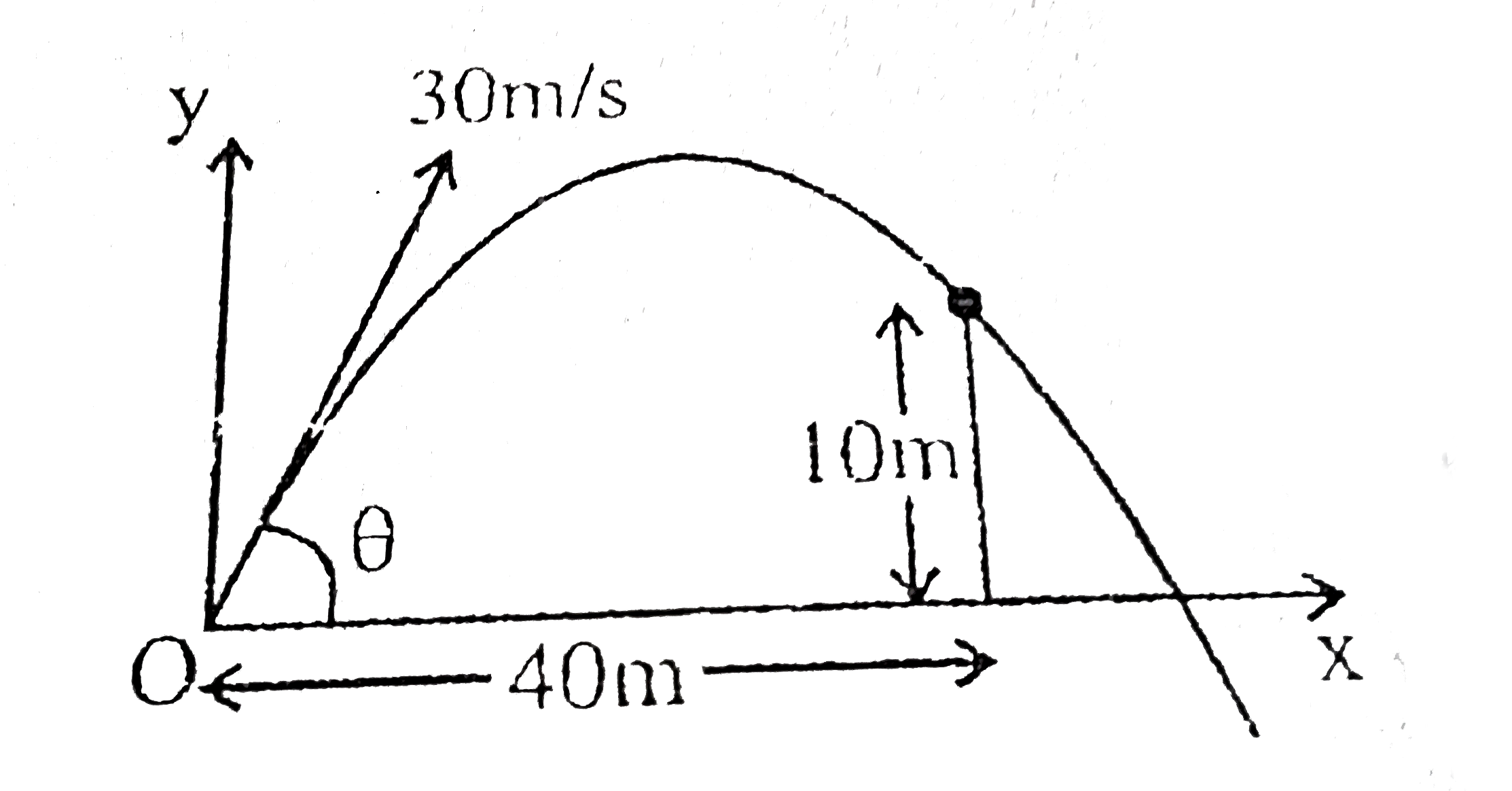It is possible to project a particle with a given speed in two possible ways so that it has the same horizontal range 'R'. The product of time taken by it in the two possible ways is
R/g
2R/g
3R/g
4R/g
The correct Answer is:B
To solve the problem of finding the product of the time taken by a particle projected at a given speed in two different angles that yield the same horizontal range R, we can follow these steps:
1. Understand the Horizontal Range Formula:
The horizontal range R of a projectile is given by the formula:
R=v20sin2θg
where v0 is the initial speed, θ is the angle of projection, and g is the acceleration due to gravity.
2. Set Up the Equations for Two Angles:
Let’s denote the angles of projection as θ1 and θ2. Since both projections yield the same range R, we can write:
R=v20sin2θ1g=v20sin2θ2g
This implies:
sin2θ1=sin2θ2
3. Relate the Angles:
From the property of sine, we know:
2θ1=180∘−2θ2
This leads us to:
θ1=90∘−θ2
4. Time of Flight Formula:
The time of flight t for a projectile is given by:
t=2v0sinθg
Therefore, the times of flight for the two angles are:
t1=2v0sinθ1g
t2=2v0sinθ2g
5. Calculate the Product of Time of Flight:
The product of the times of flight is:
t1⋅t2=(2v0sinθ1g)(2v0sinθ2g)=4v20sinθ1sinθ2g2
6. Use the Angle Relation:
Since θ1=90∘−θ2, we have:
sinθ1=cosθ2
Thus, we can rewrite the product:
t1⋅t2=4v20sinθ1cosθ2g2=4v20sinθ2cosθ2g2
Using the identity sin2θ=2sinθcosθ, we find:
t1⋅t2=2v20sin2θ2g2
7. Relate to Horizontal Range:
From the range formula, we know:
R=v20sin2θ2g
Therefore:
sin2θ2=gRv20
Substituting this back into the equation for t1⋅t2:
t1⋅t2=2v20⋅gRv20g2=2Rg
8. Final Answer:
Thus, the product of the time taken by the particle in the two possible ways is:
t1⋅t2=2Rg
Conclusion:
The correct answer is 2Rg.
The horizontal range R of a projectile is given by the formula:
R=v20sin2θg
where v0 is the initial speed, θ is the angle of projection, and g is the acceleration due to gravity.
Let’s denote the angles of projection as θ1 and θ2. Since both projections yield the same range R, we can write:
R=v20sin2θ1g=v20sin2θ2g
This implies:
sin2θ1=sin2θ2
From the property of sine, we know:
2θ1=180∘−2θ2
This leads us to:
θ1=90∘−θ2
The time of flight t for a projectile is given by:
t=2v0sinθg
Therefore, the times of flight for the two angles are:
t1=2v0sinθ1g
t2=2v0sinθ2g
The product of the times of flight is:
t1⋅t2=(2v0sinθ1g)(2v0sinθ2g)=4v20sinθ1sinθ2g2
Since θ1=90∘−θ2, we have:
sinθ1=cosθ2
Thus, we can rewrite the product:
t1⋅t2=4v20sinθ1cosθ2g2=4v20sinθ2cosθ2g2
Using the identity sin2θ=2sinθcosθ, we find:
t1⋅t2=2v20sin2θ2g2
From the range formula, we know:
R=v20sin2θ2g
Therefore:
sin2θ2=gRv20
Substituting this back into the equation for t1⋅t2:
t1⋅t2=2v20⋅gRv20g2=2Rg
Thus, the product of the time taken by the particle in the two possible ways is:
t1⋅t2=2Rg
The correct answer is 2Rg.
Topper's Solved these Questions
- MOTION IN A PLANEBOOK - AAKASH SERIESCHAPTER - MOTION IN A PLANEEXERCISE - EXERCISE-3 (Circular Motion)
7 Videos
- MOTION IN A PLANEBOOK - AAKASH SERIESCHAPTER - MOTION IN A PLANEEXERCISE - EXERCISE-3 (A boat in a river)
3 Videos
- MAGNETISMBOOK - AAKASH SERIESCHAPTER - MAGNETISMEXERCISE - ADDITIONAL EXERCISE
22 Videos
- MOTION IN A PLANEBOOK - AAKASH SERIESCHAPTER - MOTION IN A PLANEEXERCISE - QUESTION FOR DESCRIPTIVE ANSWER
7 Videos
Similar Questions
Knowledge Check
It is possible to project a particle with a given velocity in two possible ways so as to make it pass through a point at a distance r from the point of projection. The product of times taken to reach this point in the two possible ways is then proportional to
ArBr2C1/rD1/r2
There are two angles of projection for which the horizontal range is the same. Show that the sum of the maximum heights for these two angles is independent of the angle of projection.
View SolutionFor an object projected from ground with speed u horizontal range is two times the maximum height attained by it. The horizontal range of object is
View SolutionTwo particles are projected with same velocity but at angles of projection 35° and 55°. Then their horizontal ranges are in the ratio of
View SolutionTwo particles are projected simultaneously with same speed V0 in same vertical plane at angle 30∘and60∘ With the horizontal .The time at which their velocities becomes parallel is
View SolutionWrite all possible outcomes, when:
a die is thrown two times
View SolutionA projectile is thrwon into space so as to have the maximum possible horizontal range equal to 400m. Taking the point of projection as the origin, the coordinates of the point where the velocity of the projectile is minimum are:-
View SolutionA particle is projected from a point O with an initial speed of 30ms−1 to pass through a point which is 40m from O horizontally and 10m above O. There are two angles of projection for which this is possible. These angles are α and β. The value of |tan(α+β)| is

View Solution
